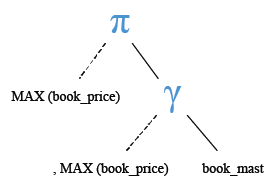MySQL MAX() function
MAX() function
MySQL MAX() function returns the maximum value of an expression.
This function is useful in -
- To identify the highest value within a column is crucial for understanding the upper limit of a dataset.
- When analyzing data, you might want to know the highest or peak value in a certain attribute.
- The MAX() function helps evaluate the highest performance metrics, such as maximum revenue, profits, or user engagement.
- Identifying the maximum value helps in assessing whether a process is operating within acceptable limits.
- When comparing performance against benchmarks, the MAX() function assists in determining how close or far data is from the best achieved results.
- In e-commerce or inventory management, determining the maximum order quantity helps in fulfilling customer demands efficiently.
- For critical decisions, knowing the maximum value in relevant data attributes can provide insights for strategic planning.
Syntax:
MAX(expr);
Where expr is an expression.
MySQL Version: 8.0
Example:
Sample table: book_mast
Code:
-- This SQL query retrieves the maximum value of the book price from the book_mast table.
SELECT MAX(book_price) -- Selects the maximum value of the book price
FROM book_mast; -- Specifies the table from which to retrieve data (book_mast table)
Explanation:
- This SQL query retrieves data from the book_mast table.
- It selects the maximum value of the book price.
- Here's how the process works:
- The query uses the MAX() function to find the maximum value of the book price column.
- It retrieves this value from the book_mast table.
- Finally, the query returns the maximum value of the book price.
Relational Algebra Expression:

Relational Algebra Tree:

Explanation:
The above MySQL statement will return the maximum 'book_price' from 'book_mast' table.
Output:
mysql> SELECT MAX(book_price)
-> FROM book_mast;
+-----------------+
| MAX(book_price) |
+-----------------+
| 250.00 |
+-----------------+
1 row in set (0.00 sec)
Previous:
GROUP_CONCAT()
Next:
Max() with group by
